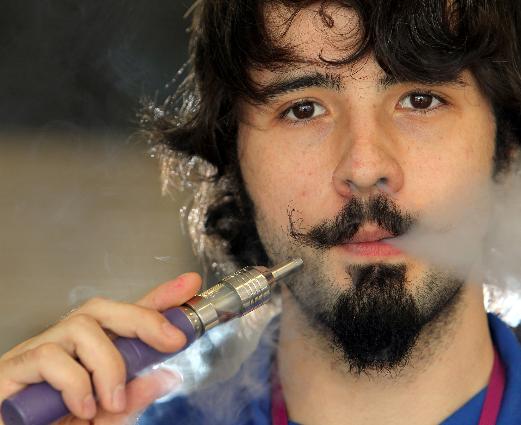An 'explosion' of youth exposure to e-cigarette TV ads
As the federal government moves to set rules that would ban the sale of electronic cigarettes to minors, a new study shows that TV ads for the products have increased dramatically during programs most likely to be watched by adolescents and young adults.
According to the study published online today by the journal Pediatrics, between 2011 and 2013 exposure to e-cigarette TV ads increased by 256% among adolescents ages 12 to 17 and by 321% among young adults, ages 18 to 24.
Approximately 76% of the ads seen by each of the two age groups occurred while watching cable networks — most often AMC, Country Music Television, Comedy Central, WGN America, TV Land and VH1. They also appeared on broadcast network programs that were among the 100 highest rated youth programs for the 2012-2013 TV season, including The Bachelor, Big Brother and Survivor, the study finds.
One brand, blu eCigs, owned by tobacco company Lorillard, accounted for almost 82% of all nationally aired e-cigarette ads viewed by 12- to 17-year-olds.
“The tobacco industry and e-cigarette industry say that they are not advertising products to youth, but they are advertising products on a medium which is the broadest based medium in the country,” says Jennifer Duke, lead author of the study and a public health researcher at RTI International in Research Triangle Park, N.C.
With a national television audience that includes 24 million viewers between the ages of 12 and 17, “as e-cigarette advertisements increase for adults they are by default also increasing exposure to youth,” Duke says. “It’s hard to argue that only adults are seeing these ads,” she adds.
Ads for traditional cigarettes have been banned from TV since 1971. A proposed rule, released in April by the Food and Drug Administration, would ban the sale to minors of tobacco products that are currently unregulated, including e-cigarettes, cigars, pipe tobacco and hookahs. The rule would also require require ingredient disclosure, federal approval and warning labels. Marketing and advertising restrictions are currently not part of the proposed rule.
Commercial: blu eCigs ad that aired during study
Commercial: NJOY ad that aired during the study
In a statement, blu eCigs said it has “proactively set limitations on when and where” its product “can be marketed in an effort to minimize any potential exposure to minors.” A part of the criteria used “is to screen all marketing opportunities to ensure that our TV ads only run with media targeting an adult audience of 85 percent or greater.”
The new study, which analyzed Nielsen television audience measurement data, did not focus on the content of the commercials or the audience intentionally targeted by the ads, only who had exposure to them, Duke says.
The finding that these “unregulated advertisement messages about the benefits of e-cigarettes are out at a large and increasing volume” is alarming because “there are no counter messages by the public health community,” she says.
Among the safety concerns about the battery-powered devices that turn nicotine-laced liquid into a vapor that users inhale, is that nicotine (derived from tobacco leaves) is addictive and may lead users to try other tobacco products.
E-cigarettes have not been fully studied by the FDA, but a laboratory analysis of several samples conducted by the agency in late 2008 found trace amounts of carcinogens and toxic chemicals, such as diethylene glycol, an ingredient used in antifreeze.
Results of the new media study provide “the strongest evidence that there has been an absolute explosion of youth exposure to e-cigarette advertising on television,” says Matthew Myers, president of the advocacy group Campaign for Tobacco-Free Kids.
“It’s particularly disturbing precisely because Congress removed cigarette advertising from television because of the unique impact TV advertising has on young people,” Myers says. ” When e-cigarette manufacturers say that they don’t market to minors, it’s deja vu all over again. This study demonstrates the importance of FDA moving rapidly and decisively to protect our nation’s children.”


